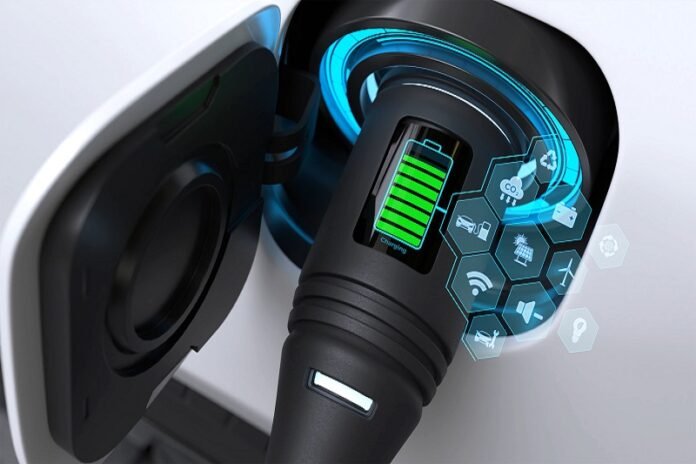Have you ever wondered what it takes to install a BYD electric vehicle (EV) charger at home in Australia? Are you curious about the steps involved in making sure the setup meets local regulations? Perhaps you’re looking for the easiest way to optimise performance without breaking the bank. If so, you’ve come to the right place.
In today’s environmentally conscious world, BYD chargers have gained massive popularity for their reliability and efficiency. They’re designed to offer a smooth charging experience, and many EV owners rave about their user-friendly features. That said, proper installation plays a massive role in ensuring a safe and stress-free experience, not to mention reducing potential future costs.
Throughout this blog post, we’ll explore best practices for BYD charger installation from start to finish. We’ll discuss technical considerations like switchboard requirements, power capacity, and Australian regulations. We’ll also look at hiring a professional vs. doing it yourself and answer top questions on cost, compatibility, and maintenance. By the time you reach the end, you’ll feel more confident about planning and executing your own BYD charger installation or hiring the right help.
Table of Contents
Introduction-
Overview of BYD Charger Installation
BYD chargers stand out for their blend of reliability, speed, and user-friendly design. When installed correctly, they deliver efficient charging times while meeting Australian safety standards. For anyone unfamiliar with home EV charging setups, it helps to think of BYD chargers as a dependable piece of equipment designed for both everyday convenience and long-term savings.
One key reason people consider a BYD charger is its robust compatibility with various networks and vehicles. With the Australian EV market expanding rapidly, having a brand you can trust for future models is a big advantage. But proper installation is crucial. If the charger is incorrectly placed or not matched to your home’s electrical capabilities, you might face setbacks like slow charging or even potential hazards.
Why Installation Best Practices Matter
Best practices provide a roadmap for ensuring safe, legal, and efficient installations. Skipping essential checks could lead to short circuits, unexpected upgrades, or higher electricity bills. Plus, correct installation impacts your charger’s overall lifespan, making it a long-running investment rather than a frequent replacement cost.
On top of that, adhering to best practices saves time and stress down the road. Having the right cabling, switchboard setup, and safety measures in place means fewer maintenance issues and faster troubleshooting. It’s not just about setting up the charger; it’s about making sure you’re covered for the future, too.
Understanding BYD Chargers-
What Makes BYD Chargers Unique?
BYD chargers earn high praise for their dependable build quality and advanced charging technology. They often come with features like smart charging modes, allowing you to schedule charging during off-peak hours. This can help lower your electricity bill and maximise the convenience of overnight charging.
Moreover, BYD’s reputation in the EV sector adds confidence. The brand’s chargers are typically designed to handle steady energy flow, so you worry less about voltage spikes or power surges. Many Australian EV owners look for products that can cope with local climates and infrastructure. BYD chargers, with their reliability and robust design, usually fit the bill. They’re also known for straightforward controls and minimal fuss during day-to-day use.
Deciding on the Right Charger-
Quick Wins Keywords: Key Factors to Consider for Australian Homes
Choosing the right BYD charger involves assessing several key factors to align with Australian conditions. Think about your home’s electrical capacity, daily commute length, and weather patterns in your region. For instance, coastal areas with high humidity may demand extra shielding or weatherproof charger casings.
Power supply is another essential point. Some older Australian homes might not be equipped to handle high-capacity EV chargers without an electrical upgrade. As electricity tariffs can vary across states, installing a charger with an adjustable charging rate may help you tap into cheaper off-peak pricing.
How to Determine Ideal Charger Capacity
The ideal charger capacity depends on your car battery size and the speed you want. If you cover short distances daily, a lower-capacity charger might suffice. However, if you frequently travel long distances and want to speed up charging times, a more powerful charger is often beneficial—provided your switchboard can cope with it.
When you plan for future needs, consider whether you’ll buy another EV or upgrade your existing vehicle. Installing a more capable charger from the outset might save you hassle and cost later on. By comparison, underestimating your requirements could result in slower charge times or an urgent need to upgrade the entire setup.

Preparing for Installation-
Low Hanging Fruit Keywords: Essential Pre-Installation Checks
Pre-installation tasks are your first line of defence against surprises. Start by reviewing your switchboard and identifying any existing faults or capacity shortfalls. Look into whether you’ll need an extra circuit breaker or safety switch. If a local electrician flags any problems, it’s better to address them now rather than mid-installation.
Location is another factor. Check if you want the charger to be wall-mounted or free-standing. Also, measure the distance to your vehicle’s usual parking spot. If the cable’s short and your power source is on the other side of the garage, that’s an added cost and complexity. These ‘low hanging fruit’ checks can save both time and money.
Achievable Difficulty Keywords: Common Electrical Requirements
Most BYD chargers require a dedicated circuit and a stable power supply. You may need a single-phase or three-phase connection, depending on the charger’s rating. Single-phase setups are common in many Australian homes, but they might restrict your maximum charging rate to slower speeds.
In addition, confirm the size and rating of household wiring. Older properties might have outdated cables that can’t handle modern EV charging demands. Sorting this out early helps prevent overheating, blown fuses, or frequent tripping. Achievable difficulty steps like hiring an electrician for an initial inspection will make sure you’re setting off on the right foot.
Hiring a Professional vs. DIY-
Commercial Intent Keywords: Why Choose a Certified Electrician
If you’re thinking about how to power up your EV, you’ve likely considered going DIY. However, hiring a certified electrician offers a stress-free route and peace of mind. A seasoned professional will tailor the installation to your home’s specific needs, ensuring compliance with Australian safety regulations.
When professionals handle the wiring and circuit installation, they verify everything is up to code. This reduces the chance of issues down the track, like dangerous electrical faults or unplanned blackouts. Moreover, an electrician’s experience often means they can recommend the best hardware and setup to keep energy usage efficient in the long term.
Safety and Compliance-
Australian Regulations for Charger Installation
Safety rules around EV charger installations can feel complex, but they’re undeniably vital for your protection. Australian Standards (AS/NZS 3000) often apply to residential wiring, and each state or territory might add its own local guidelines. Proper grounding, the correct type of circuit breaker, and suitable isolation switches are usually standard demands.
If you’re adding a BYD charger to a multi-unit complex, strata bylaws might also come into play. High traffic keywords often revolve around “EV charger compliance” because many Aussies are unsure about which guidelines to follow. Staying updated with official resources, or consulting an electrician who knows the ropes, cuts through the confusion.
Obtaining Permits and Approvals
Your local council may request permits for major electrical work, although specifics differ by region. In some instances, you just need a licensed electrician to sign off on the job. For more elaborate projects—like installing multiple chargers or adding solar connectivity—a formal Development Application might be necessary.
It’s easy to overlook permits, especially when you’re focused on the technical aspects of charger installation. Yet ignoring legal regulations could lead to fines, undone work, or complications with future home sales. To maintain a smooth process, research your local requirements or ask your electrician to handle approvals on your behalf.
Installation Steps and Best Practices-
Competitive Keywords: Tips for Hassle-Free Setup
Installing a BYD charger shouldn’t feel like scaling Everest. If you follow a structured approach, the process can be pretty straightforward. First, confirm your home’s energy supply and your chosen charger’s power needs. Next, plan the charger’s location. Look for a spot that’s accessible yet weather-protected, ensuring your charger remains easy to reach in rainy conditions.
Once you have the charger, your electrician will mount it securely and handle key wiring tasks. After turning the power on, test for correct operation. A successful test run ensures the charger is functioning as intended, delivering the right power level, and not tripping any circuits. Remember to keep user manuals in a safe place for future reference or troubleshooting.
Ensuring Proper Cable Management
Messy wiring can cause both safety hazards and practical inconveniences. Not only do loose cables pose tripping risks, but they’re also more prone to damage over time. Proper cable management might include conduits or brackets that keep cords tidy and often shield them from both curious pets and harsh sunlight.
Good cable management also adds to your home’s appearance. No one wants cables draped across walkways or driveways. A neat setup is easier to maintain and reduces wear and tear. Plus, it simplifies any future inspection or modifications you might wish to make.
Optimising Charger Performance-
High Volume Keywords: Strategies for Efficient Charging
Mornings can be hectic, so efficient charging is a must. One strategy is to utilise your charger’s built-in timer if available. Scheduling your charge to start at night, when electricity rates are often cheaper, helps you lower monthly bills. Plus, you’ll wake up to a fully charged EV.
Temperature also influences charging rates. Extremely hot weather may lead to slower charging or built-in protective features kicking in. If possible, install your charger in a shaded area or garage to minimise heat-related slowdowns. Keeping your charger firmware up to date is another helpful tip; occasional software updates can improve performance or address minor bugs.
People Also Ask: “How Can I Reduce My Charging Costs?”
Opting for off-peak or time-of-use electricity plans is one of the easiest ways to save money. Some Australian providers offer special EV tariffs with lower night rates. Installing solar panels is another long-term strategy if you’re serious about cutting back on energy costs. During sunny days, you could harness free energy to power your car, significantly reducing reliance on the grid.
Conclusion-
Final Thoughts on Maximising Your BYD Charger
Your BYD charger is more than a tech gadget—it’s an investment in sustainable living and daily convenience. Ensuring best practices during installation sets you on the right path for years of seamless operation. Remember to stay updated with any firmware upgrades, check cables routinely, and troubleshoot promptly to maintain performance. Whether you’re upgrading an older home or building a modern eco-friendly residence, a properly installed BYD charger can become the backbone of your EV lifestyle. By following these guidelines, you’ll enjoy a reliable charging setup that truly stands the test of time.








